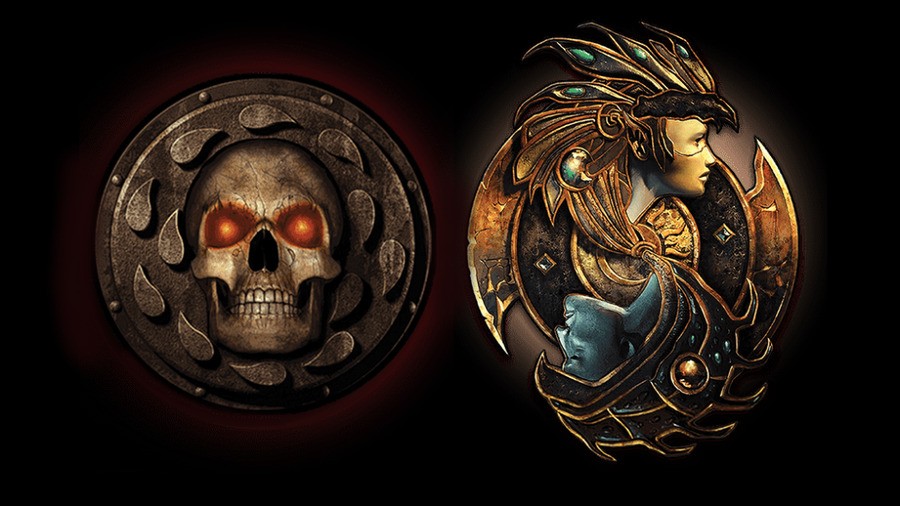
There was a ripple of excitement amongst old-school RPG fans at the end of May when it was announced that a raft of D&D classics were heading to consoles, including your favourite Nintendo handheld hybrid. Beamdog, the developer behind the Enhanced Editions of Baldur's Gate, Baldur's Gate II, Planescape Torment, Icewind Dale and Neverwinter Nights, has plenty of pedigree with these games and has released them previously on PC and mobile devices.
We recently got the chance to ask Luke Rideout, producer at Beamdog, about Baldur's Gate: Enhanced Edition and the challenges of bringing these games to console over two decades after the original PC release.
There may be players on Switch who aren’t familiar with Baldur’s Gate or its legacy, or perhaps have only heard the name – could you explain a little bit about the game and its history?
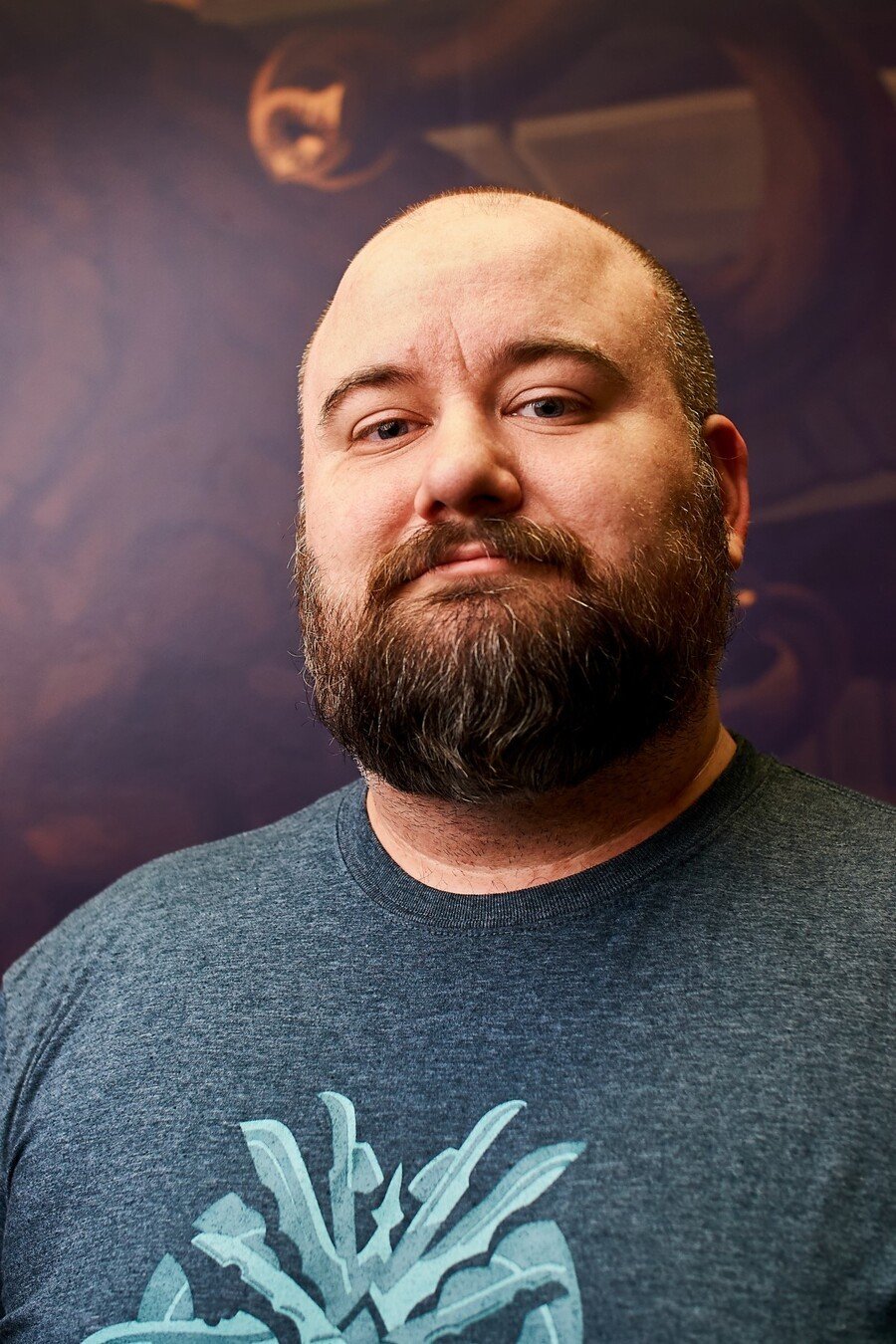
Baldur’s Gate was originally developed and released 20 years ago by BioWare as a fantasy RPG set in the Dungeons & Dragons world of the Forgotten Realms. Back in the ‘90s the game was considered revolutionary for its open world design and branching narrative choices that promoted player agency, all while telling a fantastic story. Back in 2012, Beamdog Co-Owners (and Bioware alumni) Cam Tofer and Trent Oster got the rights to re-release Baldur’s Gate with enhancements to bring it to modern devices, breathing life back into the series for gamers of a new generation. Funnily enough, the story of Baldur’s Gate was based on a tabletop D&D campaign that Cam played in when he was in High School, with their dungeon master, James Ohlen, who is well known as Baldur’s Gate’s lead designer. Cam’s character was a ranger called Minsc with his companion hamster, Boo.
It was a hugely influential RPG – in terms of the Switch’s library, what games do you think have taken inspiration from Baldur’s Gate?
There are so many games that draw inspiration from Baldur’s Gate, both subtle and not-so-subtle. It played a large part in defining the genre of modern RPGs, and its successes informed the design decisions made in many games to come. One game that springs immediately to mind, of course, is Pillars of Eternity, to which some very obvious comparisons can be drawn, from the camera perspective down to the tactical, real time with pause combat. The Witcher might seem a slightly less obvious choice, but CD Projekt worked with BioWare back in that era, and licensed the Aurora Engine to make the first game in the series - which is the engine created by BioWare for Neverwinter Nights - BioWare’s answer to the natural progression of RPGs from Baldur’s Gate.
The Enhanced Edition originally released on PC back in 2012 (and subsequently on mobile devices). What were some of the things about the original which needed updating?
Well, as a Windows 95/98 title, originally, our team had to first re-write hundreds of thousands of lines of code just to get it working on modern systems. Beyond just getting it up and running, the goal was to streamline and smooth out the gameplay so, as Trent likes to say, it became the game everyone remembered, not necessarily the game that it was - since games had advanced quite a bit in the intervening years and objectively, when going back to look at the game as it was in 1998, it had a lot of rough edges. The team optimized the game, removing the loading screens (which were slower to load than just transitioning to another screen), fixed scores of bugs, and brought the UI more in line with modern expectations.
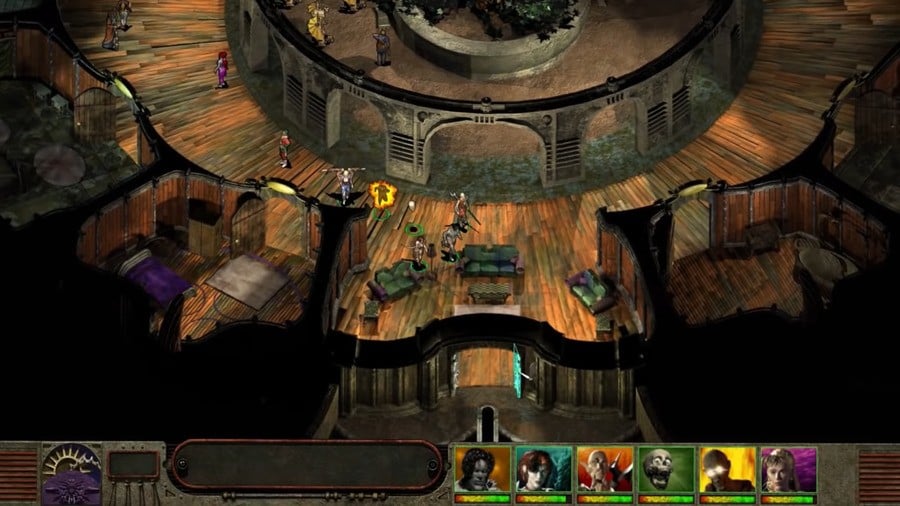
Issues like small text are still commonplace on Switch, even in first-party releases. Having already been optimised for touch devices, what were some of the challenges – technical or otherwise – in bringing Baldur’s Gate and its sequel to Switch? How difficult was it to make it work with a control pad?
Of the challenges we faced, small text wasn’t that big of an issue for us, as we supported text scaling from previous iterations. The biggest challenge for us, really, was adapting a very “late ‘90s” user interface, built for mouse and keyboard with nested menus and scores of buttons, to work with controllers that ostensibly have 14 buttons and a couple analog sticks. We wanted to be sure that the game played well, and didn’t feel like a chore to play. We rewrote our movement code to let players take control of the party movement using the analog stick, instead of pointing and clicking, and changed those banks of buttons into radial menus. To make interacting with a game world that had a lot of pixel hunting, we improved highlighting of in-game objects and a system that snaps the cursor to important game elements, like characters, objects and transition points. We had to make a lot of design decisions to solve issues that seem so harmless when you have the fine control of a mouse and keyboard.
The console releases will include the Beamdog-developed Baldur’s Gate: Seige of Dragonspear expansion – could you tell us more about that?
Baldur’s Gate: Siege of Dragonspear was Beamdog’s love letter to the series. It bridges the gap between the events of Baldur’s Gate I and II, telling a tale of a war-torn Sword Coast in the wake of the events that transpire in the first Baldur’s Gate, fleshing out a number of questions about some otherwise unexplained changes in the political atmosphere of Baldur’s Gate II, and detailing the journey that lands the player ultimately in the dungeons of Jon Irenicus at the start of Baldur’s Gate II. Thanks to the series’ ability to import and continue playing your character from one game to the next, players can build a character in Baldur’s Gate: Enhanced Edition and play using the same character all the way through Siege of Dragonspear and into Baldur’s Gate II: Enhanced Edition. That said, it made a lot of sense to both Beamdog and Skybound Games to combine all three for the console release this fall.
Will the Switch version be making use of any of the console’s unique features?
One question we get asked a lot is whether we implemented touchscreen functionality. It was a hard decision to make, but with the changes made to the game’s UI, and the general finickiness of Baldur’s Gate’s UI under the hood (we are working with 20-year-old UI code), it actually felt like a half measure to leave it in, when much of the original functionality would have been lost. The feature that the Switch does boast that nobody else does and is most exciting, though, is the great feel of the controller scheme, paired with the portability of the Switch, which we support in both docked and undocked modes.
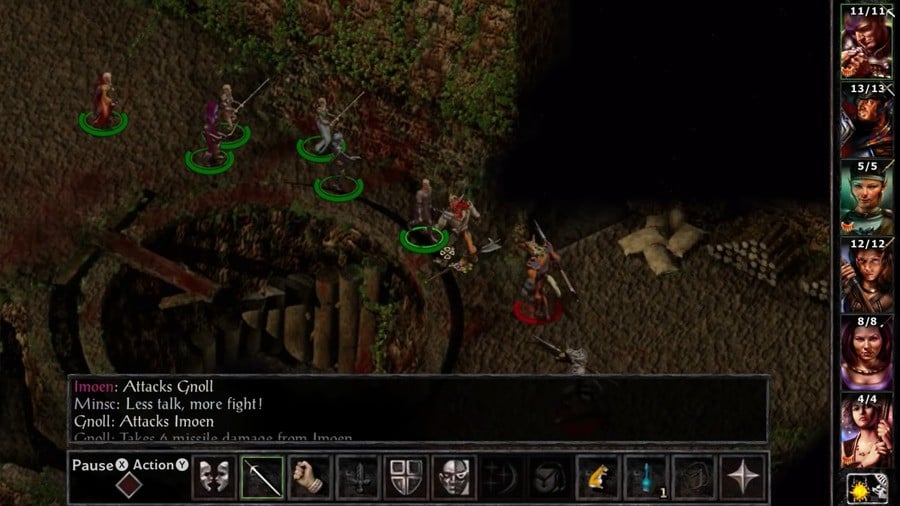
In the past, Beamdog co-founder Trent Oster has spoken plainly about Nintendo’s weaknesses when it comes to its digital business and treatment of smaller developers (and offered some advice as to how it could improve). How different has the process been developing for Switch and working with the platform holder all these years later?
Things change, that’s for sure. I personally spent my share of time developing for Nintendo back in the Nintendo DS and Wii days, mostly for retail games as opposed to WiiWare. I don’t recall many headaches, but that was in Japan where things may have been very different. Working with the Switch on these games, we’ve been really happy with the support Nintendo provides to developers, and haven’t had much trouble at all navigating the waters of development and certification.
The practice of including a code in a box is becoming disappointingly commonplace for boxed retail versions of many Switch games. Patches aside, will the physical release contain both games on the cartridge?
Anyone that’s sick of codes in a box is going to be in for a treat, in this case. With Skybound Games, we’ve put all the base game content plus DLC, all on one cartridge. For those who aren’t familiar, that’s:
- Baldur’s Gate: Enhanced Edition
- Baldur’s Gate: Siege of Dragonspear
- Baldur’s Gate II: Enhanced Edition
- Throne of Bhaal (Expansion to BGII)
- Baldur’s Gate: Black Pits
- Baldur’s Gate: Black Pits II
For a complete trilogy of games and the “wrap it all up and put a bow on it” expansion, plus two standalone challenge mode games, to boot. Likewise, we’re simultaneously releasing the Planescape: Torment & Icewind Dale Enhanced Editions on one cartridge as well (including Icewind Dale’s Heart of Winter Expansion).
Baldur’s Gate and its sequel are just two of a selection of classic D&D games coming to Switch. Beyond this lineup, does Beamdog have any future plans on Switch?
We can’t speak to our more distant future plans, but this year we have a few more D&D titles coming to Switch. Alongside the Baldur’s Gate Pack this fall, Skybound and Beamdog are releasing a two-pack of Planescape: Torment and Icewind Dale enhanced editions. We’re also releasing Neverwinter Nights: Enhanced Edition on Switch December 3rd!
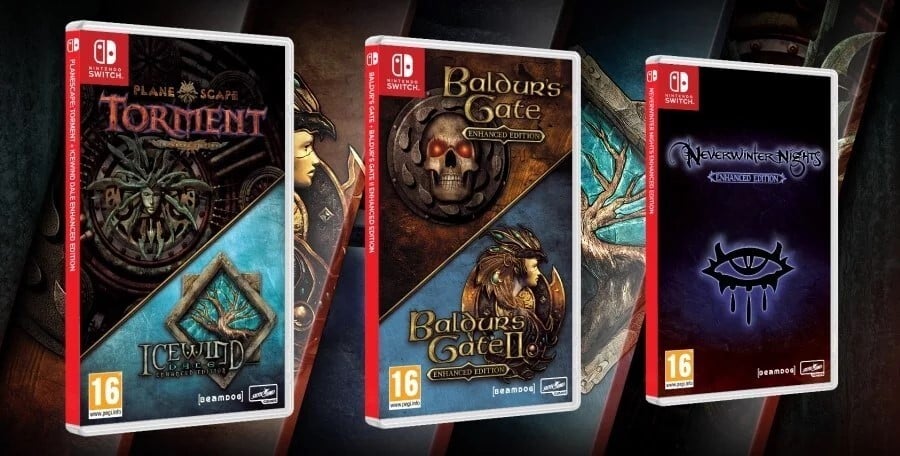
Finally, what Switch games has the team been enjoying recently?
There’s a lot of love for the Switch inside Beamdog. We recently celebrated our 10-year studio anniversary, and a good half of the dev team joined in on a round-robin tournament of Mario Kart 8 on the big-screen TVs in the Baldur’s Gate development room. We also semi-regularly have Super Smash Bros. Ultimate tournaments. In the RPG space, members of our team are enjoying The Legend of Zelda: Breath of the Wild, Xenoblade Chronicles 2, Fire Emblem: Three Houses, and good ol’ Dark Souls, among a score of many others.
Many thanks to Luke for his time. The Baldur's Gate: Enchanced Edition and Planescape:Torment /Icewind Dale bundles will be hitting Switch on 1st October in North America and 4th October elsewhere in both physical and digital formats. Will you be picking up that physical bundle? Let us know with a comment below if you're eager to play these classics on-the-go.





Comments 41
Love Beamdog, they've done a brilliant job updating the classic D&D games. I won't be double-dipping as I just feel that they're best played on PC but it's great that more people will be able to play these games.
Never played these, as much I love the look and perceived depth that they have Western RPGs tend to be a little bit too indepth for my idiot mind to wrap around. It's a real shame.
I will buy all 3 of them!
I love when developers/publishers just respect the players with such beautiful physical editions!
No touch screen controls???!!!!
Sorry but there is NO EXCUSE for a MOUSE game to have no touchscreen controls on the Switch.
Hard skip.
Interesting interview! I'm quite excited about these releases. Back in the day I was too busy playing Starcraft so I've missed them the first time around, and seeing as I'm spending most of my working week behind a desktop pc I don't really feel like gaming on in too, so a console release suits me just fine.
I played 2 when I was 12 and was only familiar with the FF type of RPG. I didn't understand any of it, though O could see awesomeness and a vreat adventure was there within my reach if I could just wrap my head around what was going on. Now that I'm 32 and played several of these types of ganes and actually played D&D, I feel like O' m finally ready foor that experience. So I'm SO glad I'm getting another chance to go on this adventure! Thnq guys for bringing this to switch!!!
Can't wait to get Planescape: Torment. <3
Thank you so much for bringing these games to the Switch. I LOVE Dungeons & Dragons and having these is like mana from the heavens. Add in Pillars of Eternity and Divinity: Original Sin 2 and the Switch is now my companion whenever I can't call my friends for a real tabletop session. Now we just need Baldur's Gate 3 on the Switch
@sanderev so you want to keep touching the screen for like 10 hours and hardly see anything. This aint a puzzle game dear
These games sound great but I can't get into them. They seem so complex and story-rich that it'll take over all my free time trying to make any progress in them, especially when the freedom to play them on handheld is added to the mix. Wishing all the success in their sales though...the more great games, the better I always say.
@Dualmask I tried to like these games as well. But somehow it didn't work for me. Not even on PC version. To me it's too slow. I want fast action and battles and story comes as well when you progress more. A little bit too much fussle for me
I would love to see something similar happen with the Eye Of The Beholder series of games. They really were fantastic. I also loved Abandoned Places.
These are the best games you can actually play on PC. Prepare that these will become the best games you will be able to play on the Switch. These are games for real gamers.
Well, while I prefer the original versions of these games, the EE versions are really good, fantastic.
I am playing Icewind Dale (Complete) from GOG just right at this moment. I absolutely love these huge dungeons in this game. The atmosphere of frost, winter and solitude plus the amazing OST from Jeremy Soule are magnifcient elements of this game. If only this game wasnt such linear...
@sanderev someone sounds butthurt.
@sanderev no one here is missing your game play. Also those games on PC don't have touch screen as well.
These were my first RPG game experiences back in the day. The audio effects; music, voice were in my experience on a cinematic level. After playing these, JRPG's seem like match 3 games. Can't wait to experience these again.
@sanderev You would very like need a cocktail stick to play these with touch LOL!
@Alucard83 It's an RPG in which you have to control and guide multiple party members in a world with a topdown view. Sorry, I don't want inferior controls to the PC version.
This version looks like it's dumbed down for other consoles and they didn't bother with using the Switch primary functions.
I could live with it in Diablo 3, because you always control one character in that game.
Also these games have an iPad version, which plays just as good as the PC version.
@spirit_flame or a stylus.
So. Much. Hype.
I’ve just pre ordered the Beamdog special box set for £199 from game that includes all the games and dlc plus extras.
These are games i can’t wait to own. That will be my time over Christmas taken care of and well into the new year.
Shots fired!
For crying out loud NL.
Way over priced considering they are the same version on mobile devices.
Will pick them all up but not at these prices. Should of been £24.99
I have found memories of these games. Bring em on.
Great news! Overwatch can screw itself with that code in a box stuff and this new Spyro trilogy putting less than half the content on cart. Was having a discussion with my friend who only buys digital and even he said that it was a terrible waste of resources and a big disappointment for those expecting a physical copy.
I have finished both games twice, and there is a lot of content! But trust me, the UI is going to be small in handheld unless they find some way round the layout of all the icons, tv no problem.
I played both on my iPad Pro 12 inch and have played on a iPhone 6 before but it was a struggle. Personally won’t be double dipping as I have both on a 12.9 iPad Pro which I think is the best way to pay this game for me personally ( as in touch screen play )
It's my hope to get all three of these physically, but finances are likely to mean I'll need to play a waiting game.
@Expa0 I feel the same way and I love those types of RPGs. Glad I’m not alone.
Some great games from my youth here that I hope a lot of new players will enjoy!
I had the touch versions, and hated them immensely. Very excited to use a controller. My fingers couldn't accurately play the game.
If you have a PC, you should really play the BGR mod for NWN2 --> "Baldur's Gate Reloaded" a fan mod of Baldur's Gate made for the NWN2 game engine, so 3D Baldur's Gate!
Check it out:
https://www.nexusmods.com/neverwinter2/mods/794
Or check out YouTube videos
So excited to get these on the go!
Too bad they ditched the touch controls, it's always nice to have options. I.e., manage inventory or put commands in a pause mode by a touch screen and do everything else by a gamepad.
Great and all but price is too high. Its like $70+ per game collection and there's three of them.
This is where I remember that Icewind Dale 2's source code was lost and will never be remastered/ported.
It’s really awesome that all these games are being offered in such a complete physical package. I applaud the people behind these for putting in the extra effort to provide a superior release.
I’ve never played these before, but as a fan of physical releases done right and someone who’s intrigued by how deep the games sound, I’ll definitely be picking these up.
I'm still wondering how NWN is going to work, since nobody really plays that for the vanilla experience.
Definitely buying the Planescape Torment and Baulders Gate bundles.
Who knew the Switch would become the best console for Western RPGs?
sounds like a deal I can't refuse
@RiasGremory I agree. Or very entitled at least. The answer given to why touch screen isn't used was valid.
O.M.G. I forgot about these games!! So long, paycheck, I hardly knew ye.
It's pretty incredible. When BGII launched, every single copy arrived in a large box, with a corrugated cardboard insert. Inside was the multi-disc jewel case, a large, 180+ page spiral bound manual about an inch thick or more, all on glossy print. A cloth map of the world. A coin. And some other minor swag. Standard in the $60 box, not a $140 collectors edition. Not a pre-order bonus. Everybody got all of that for $60.
Today it's considered a major fan-service to actually include the game in the box.....
I miss the past.
@Barbara001 same here, started at age 12, little mind couldn't comprehend what was going on. By the time neverwinter came out I finally got the hang of dnd games. Cant wait to reunite with minsc & boo
Tap here to load 41 comments
Leave A Comment
Hold on there, you need to login to post a comment...